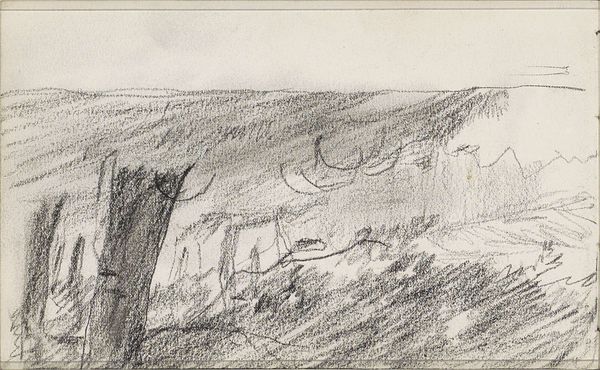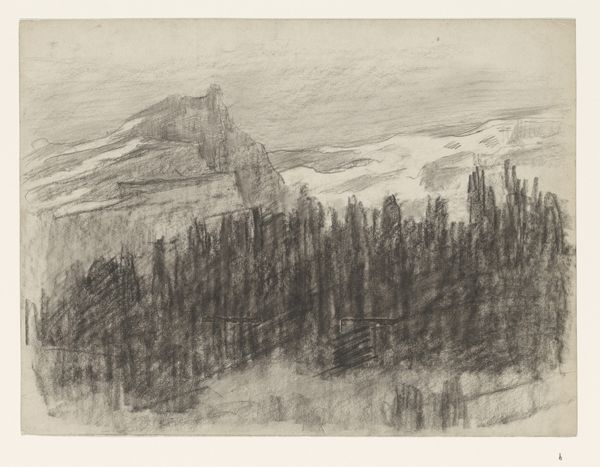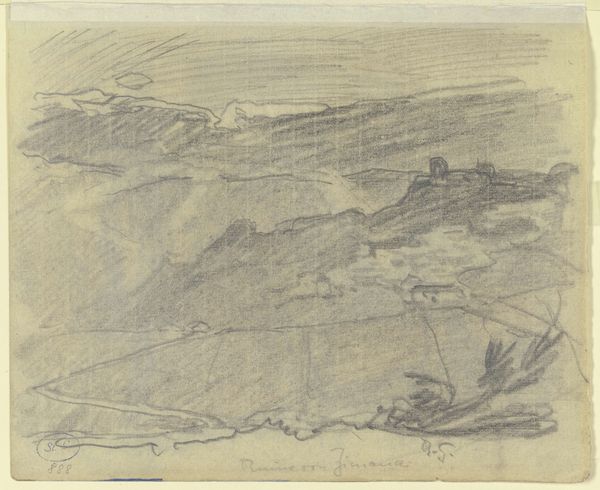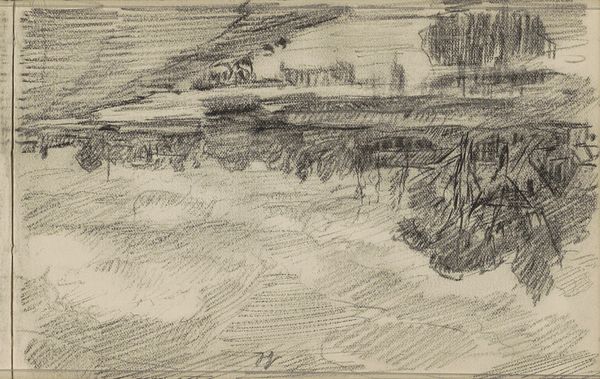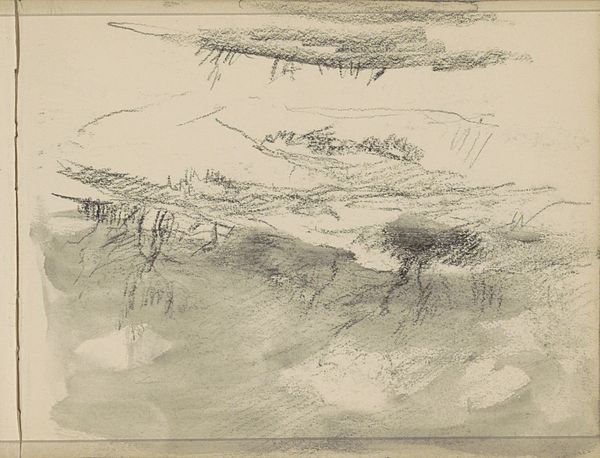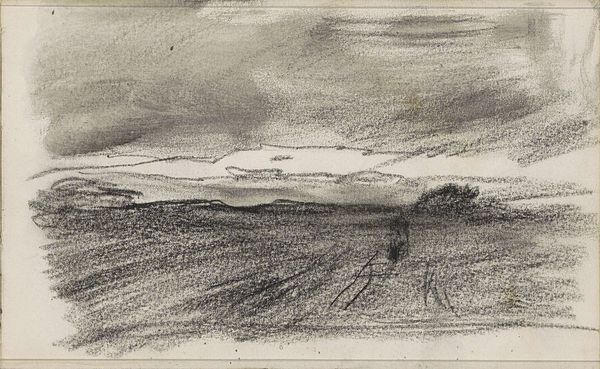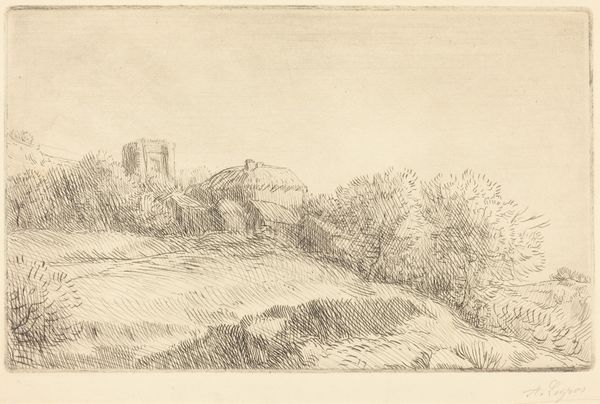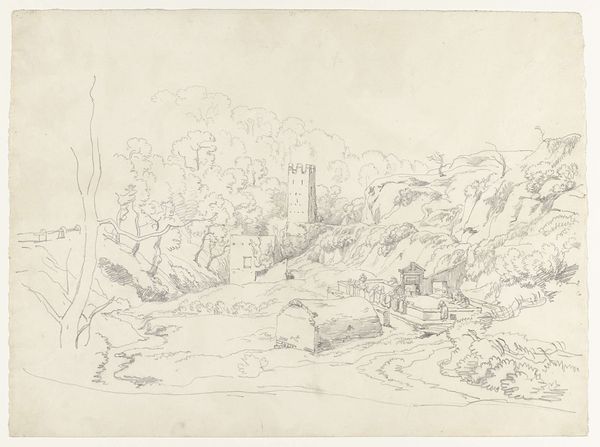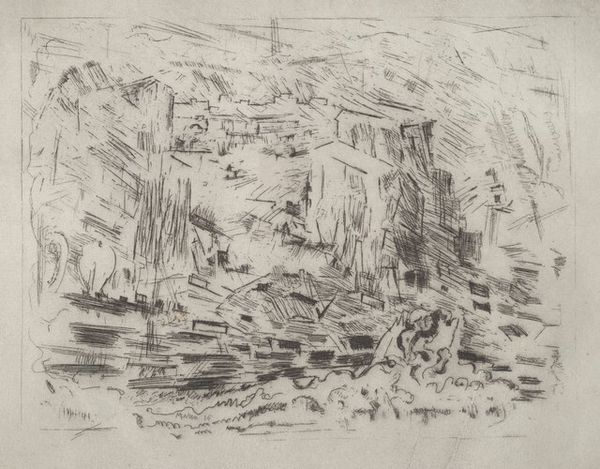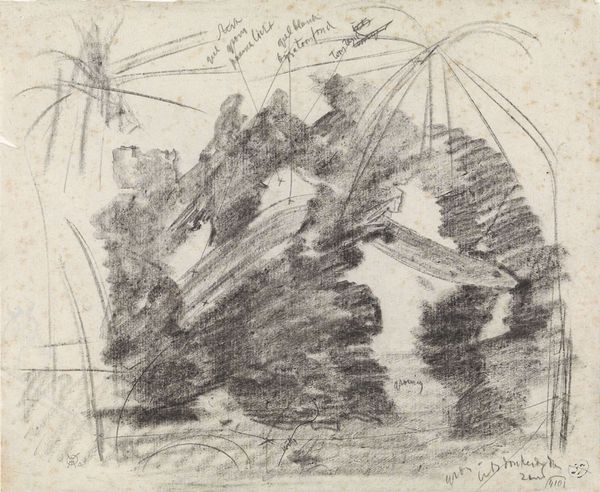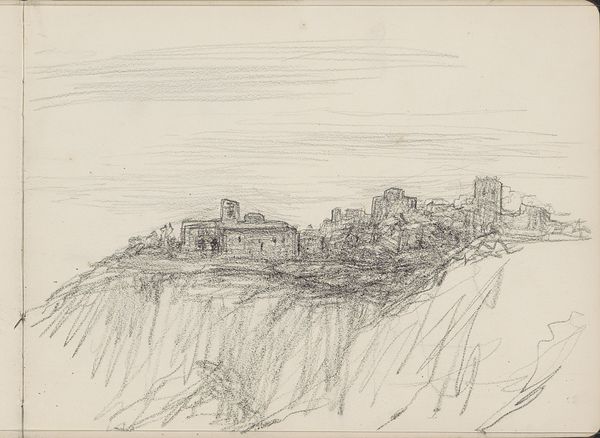
drawing, pencil
#
drawing
#
landscape
#
romanticism
#
pencil
#
academic-art
Dimensions: 6 9/16 x 8 3/8 in. (16.67 x 21.27 cm)
Copyright: Public Domain
Curator: This is Théodore Rousseau's pencil drawing, "Ruined Castle on a Cliff," created in 1834. It resides here at the Minneapolis Institute of Art. Editor: My initial feeling is of foreboding; a sort of melancholic beauty, rendered by the muted shades and the sketchiness of the execution. The textural gradations between the sky and land generate drama with tonal precision. Curator: Indeed. The sketch coincides with a period of great social and political change in France. Looking through that lens, this ruin speaks to broader anxieties about the decline of traditional power structures and societal upheaval, issues intensified following the French Revolution. The crumbling castle becomes symbolic. Editor: I understand the historical perspective. And beyond the representation of the ruin itself, I would note the emphasis on atmospheric perspective and how this contributes to the symbolic function: the hazy, indeterminate distance underscores a sense of obscurity and temporality. Curator: Certainly. Rousseau, part of the Barbizon school, often used landscapes to evoke emotional responses. This Romantic sensibility—focusing on individual experience within contexts of shifting authority—echoes contemporaneous narratives about liberty and its implications in the reshaping of cultural identity. Editor: To my eye, that emphasis on atmosphere transcends political rhetoric. Rather, it becomes intrinsic to an immersive formal exploration of decay. We see delicate cross-hatching alongside swift, almost violent strokes. How else can one portray desolation using minimal strokes? The lack of distinct details draws our focus toward line and form rather than didactic meanings. Curator: True. Yet consider this: Who has the privilege of idealizing "decay" through aesthetic appreciation, without having to face its more material realities? Isn’t there a danger of romanticizing structures or periods of violence? Editor: Point taken. While a formalist examination may reveal intricacies independent from broader social considerations, any complete analysis warrants acknowledgment toward social and political considerations of visual artworks, including these very images of devastation. Curator: Agreed. Seeing the interplay of artistic styles across time broadens our perception—understanding, not just seeing. Editor: A good point, Curator, since a conversation that blends aesthetic value with relevant critique illuminates richer understandings for how these spaces impact human history.
Comments
No comments
Be the first to comment and join the conversation on the ultimate creative platform.
